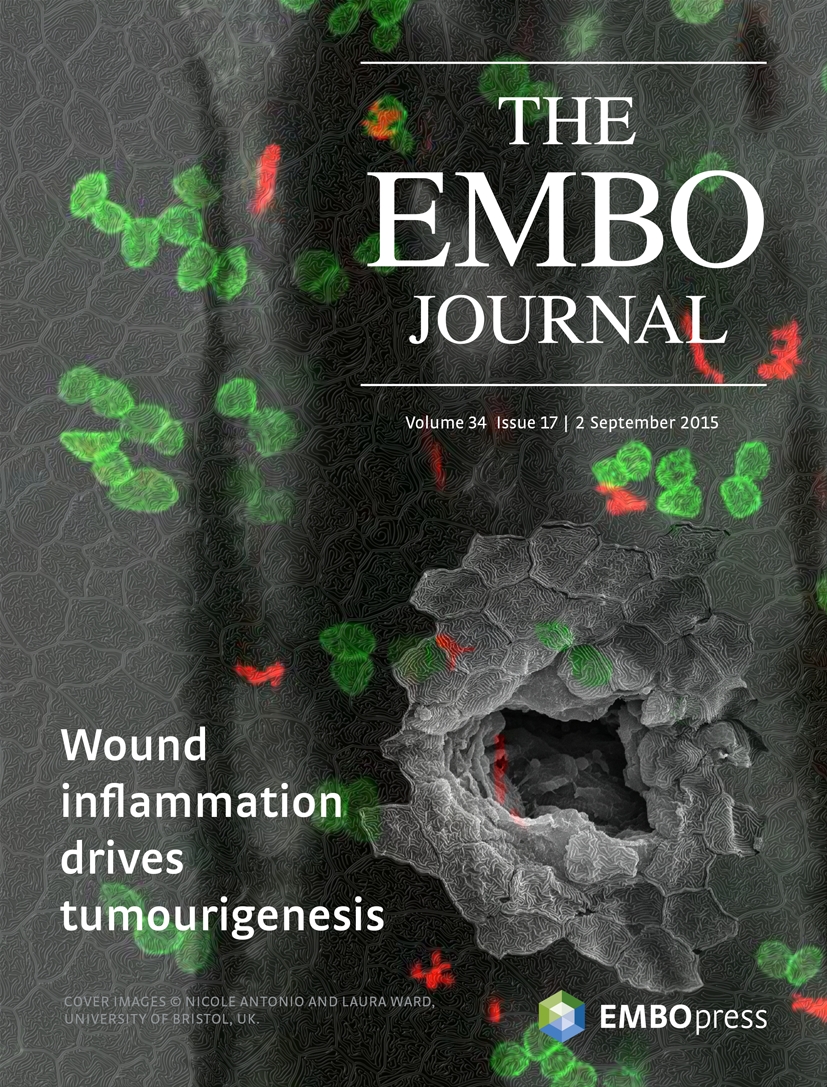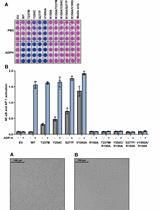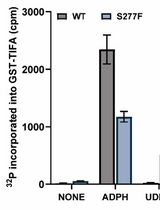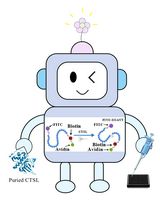- EN - English
- CN - 中文
Determination of VPS34/PIK3C3 Activity in vitro Utilising 32P-γATP
采用 32P-γATP体外测定VPS34/PIK3C3的活性
发布: 2016年08月20日第6卷第16期 DOI: 10.21769/BioProtoc.1904 浏览次数: 9984
评审: Ralph BottcherNeelanjan BoseMarc-Antoine Sani
Abstract
VPS34 is the only class III phosphatidylinositol-3-kinase (PI3K) in mammalian cells and produces the vast majority of cellular phosphatidylinositol-3-phosphate [PI(3)P]. PI(3)P is a key signalling lipid that plays many membrane trafficking roles in processes such as endocytosis and autophagy. VPS34 is a key cellular regulator, loss of function can have catastrophic effects and is embryonic lethal (Zhou et al., 2011). The levels of cellular PI(3)P can be determined by fluorescent staining techniques and can be used to monitor effects upon VPS34 activity, however it is important to verify that any changes are mediated by VPS34, particularly as alternate pathways of PI(3)P production are possible such as via class II PI3Ks (Devereaux et al., 2013). Assaying VPS34 activity directly in vitro can be a key stage in delineating the action of a particular stimulus.
Keywords: Phosphatidylinositol-3-phosphate (磷脂酰肌醇3 -磷酸)Materials and Reagents
- Hamilton syringe (500 μl) (Hamilton, catalog number: 80865 )
- Pyrex tubes (12 x 75 mm) (Corning, catalog number: 99445-12 )
- Eppendorf flex tubes (Eppendorf, catalog number: 022364111 )
- Spin-X columns (0.22 μm) (Corning, Costar®, catalog number: 8161 )
- Whatman paper (3 mm) (Sigma-Aldrich, catalog number: 3030-917 )
- Silica 60 TLC plates (Merck Millipore Corporation, catalog number: 1.05553.0001 )
- TLC spotting capillary tubes, 15.2 cm (VWR, catalog number: 80060-608 )
- Polycarbonate membranes, 100 nm pore size (Avanti Polar Lipids, catalog number: 610005 )
- Chloroform (VWR International, catalog number: 22707.320 )
- Crude liver phosphatidylinositol (PI) (Avanti, catalog number: 840042C )
- Methanol (VWR International, catalog number: 20847.307 )
- N2 gas tank (99.998% Pure)
- VPS34/VPS15 recombinant protein (MRCPPU Reagents, catalog number: DU8692 )
- 32P-γ-ATP (PerkinElmer, catalog number: NEG002A500UC )
- ATP (Sigma-Aldrich, catalog number: A2383 )
- Hydrochloric acid (37%) (VWR International, catalog number: 20252.335 )
- Glycerol (VWR International, catalog number: 24388.320 )
- Sodium dodecyl sulphate (SDS) (VWR International, catalog number: 444464T )
- Bromophenol blue (Sigma-Aldrich, catalog number: 114405 )
- β-mercaptoethanol
- Tris base (VWR International, catalog number: 103157P )
- Sodium chloride (VWR International, catalog number: 27810.364 )
- Manganese chloride (Sigma-Aldrich, catalog number: M3634 )
- CHAPS (Sigma-Aldrich, catalog number: C3023 )
- Dithiothreitol (DTT) (ForMedium, catalog number: DTT010 )
- Ammonium hydroxide (Sigma-Aldrich, catalog number: 320145 )
- ATP mix (5x) (see Recipes)
- Kinase assay buffer (see Recipes)
- Stop solution (see Recipes)
- Sample buffer (1x) (see Recipes)
- TLC solvent (see Recipes)
- Potassium oxalate (see Recipes)
Equipment
- Speedvac (Thermo Fisher Scientific, model: SPD131DDA )
- Thermomixer (Eppendorf)
- Sonicating Water Bath (Sigma-Aldrich, model: SONOREX Digital 10P )
- Mini-extruder set (Avanti, catalog number: 610000 )
- Hairdryer
- TLC chamber
- Fumehood
- Phosphoimager (optional) (Fujifilm, model: FLA-2000 )
Procedure
文章信息
版权信息
© 2016 The Authors; exclusive licensee Bio-protocol LLC.
如何引用
Readers should cite both the Bio-protocol article and the original research article where this protocol was used:
- Munson, M. J. and Ganley, I. G. (2016). Determination of VPS34/PIK3C3 Activity in vitro Utilising 32P-γATP. Bio-protocol 6(16): e1904. DOI: 10.21769/BioProtoc.1904.
- Munson, M. J., Allen, G. F., Toth, R., Campbell, D. G., Lucocq, J. M. and Ganley, I. G. (2015). mTOR activates the VPS34-UVRAG complex to regulate autolysosomal tubulation and cell survival. EMBO J 34(17): 2272-2290.
分类
生物化学 > 蛋白质 > 活性
生物化学 > 脂质 > 脂质测定
您对这篇实验方法有问题吗?
在此处发布您的问题,我们将邀请本文作者来回答。同时,我们会将您的问题发布到Bio-protocol Exchange,以便寻求社区成员的帮助。
Share
Bluesky
X
Copy link












